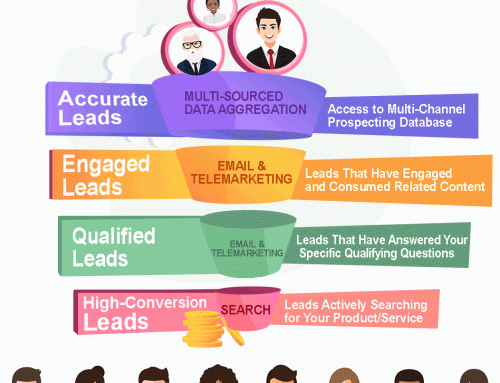Marketing has gone mobile in a big way. More than half of all email recipients now read their mail on a mobile device rather than a desktop computer, and in some industries, the mobile open rate goes up to more than 80 percent. Mobile apps such as calculators, new product alerts, and design-it-yourself tools add new ways for prospects to interact with businesses. What many B2B companies haven’t yet learned is how important mobile apps can be for lead generation. Here’s a look at how to make the most of lead gen with mobile apps.
Localize
Mobile apps excel as informational tools. When your leads download an app, they’re giving you a wealth of information about their locations, their preferred mobile carriers, the make and model of their phones, and more. With that knowledge, you and your marketing team can develop a lead gen strategy that’s localized to an unprecedented degree. You’re not just connecting with them at the office; you’re also going with them to lunch and taking the commute home with them. Localization data from mobile apps also factors into how you use other marketing channels, giving you valuable insight for direct mail campaigns, trade show invitations, and telemarketing.
Customize
The more closely your marketing team can come to having one-on-one conversations with your leads, the better the response rates you’ll see. People love a fully customized user experience, and mobile-first marketing is an excellent way to build that environment around your prospects. Responsive design that snaps to fit any screen size and orientation so your pages look just as good on a smartphone screen or notebook computer as they do on a desktop is essential. Mobile apps that give you an indication of how and when prospects use them help you know when to send emails or schedule telemarketing calls.
Engage in Real Time
Mobile marketing puts you in the right place to interact with your prospects. Apps also let you be there at the right time. Use them to announce spontaneous public events, keep subscribers up to date on your latest trade show activity, or offer customer loyalty promotions. Real-time communications take advantage of events as they happen. If a sudden cold snap is in the forecast, for example, businesses that are weather-dependent are able to connect the change directly to their audience’s needs as they arise.
Add Progressive Forms
While mobile apps are great for receiving information, typing in data isn’t particularly enjoyable for most users. Progressive forms that let new subscribers enter a bare minimum of contact data the first visit and then ask for more detail on subsequent visits are a good way to gather the information you need without taxing your app users’ patience with lengthy forms. Start with your lead’s name and email address, and you’ll generate more leads who are willing to take the next step and share more data over time.
Make Interaction Easy
Every decision point between your lead and a buying choice is a potential deterrent. You can’t remove every obstacle in your prospects’ buying journeys, but don’t make it harder for them by creating barriers for them to leap just to get where they want to be. A common mistake companies make is in adding their phone numbers to contact pages but failing to make the numbers clickable. Remove that barrier to action and make it as effortless as possible for your leads to reach out to you. People on their phones aren’t always going to have a pen and paper handy to jot down your number; make it so they never have to.
Offer Compelling Reasons to Download
With the capabilities smartphones now have, you and your mobile marketing team are limited only by your creativity when developing and using mobile apps. Apps that scan virtual business cards at trade shows, feature industry-specific calculators, or monitor a project’s progress are just a few possibilities for making your organization indispensable to your leads.
© Reach Marketing LLC 2016 All Rights Reserved.






